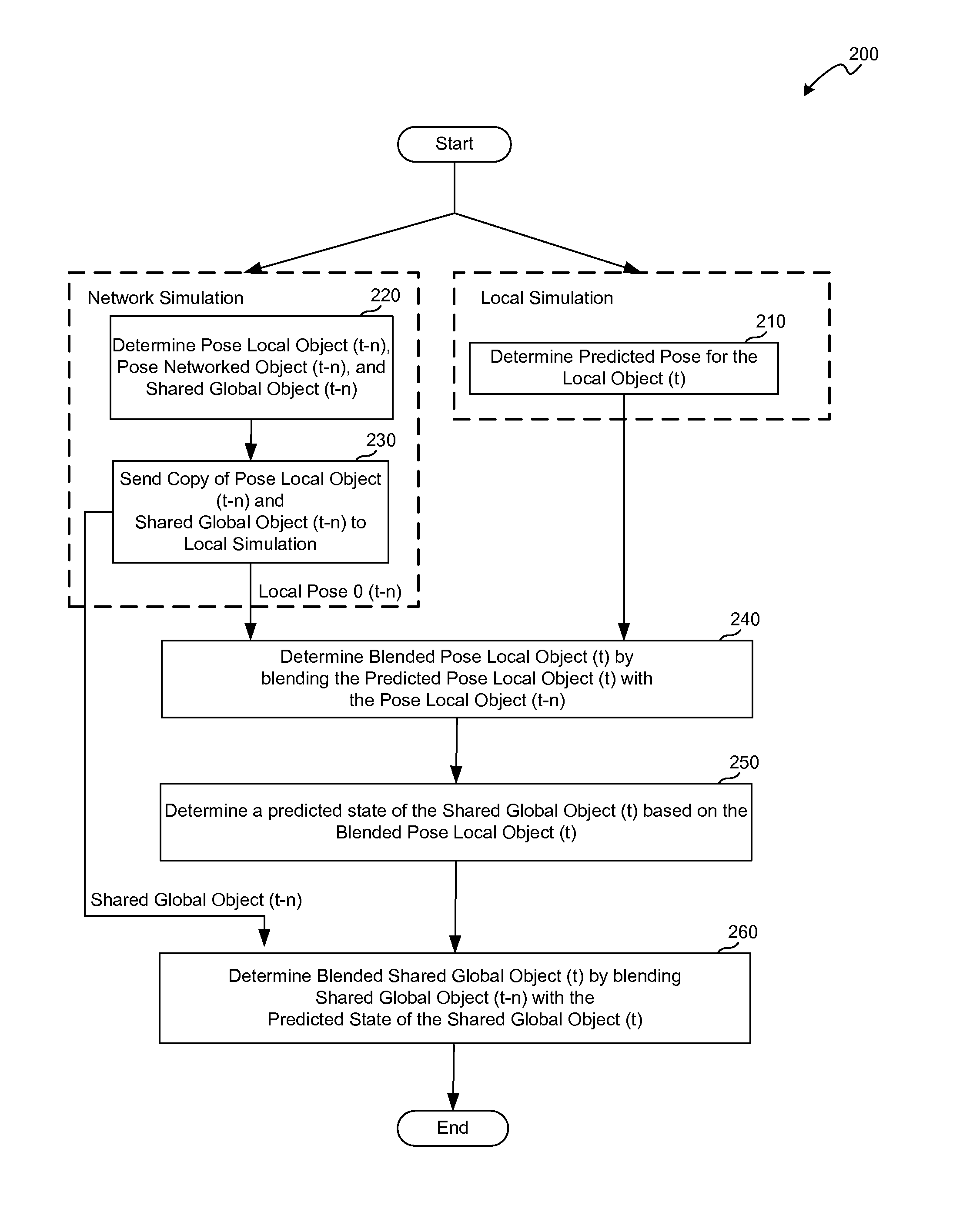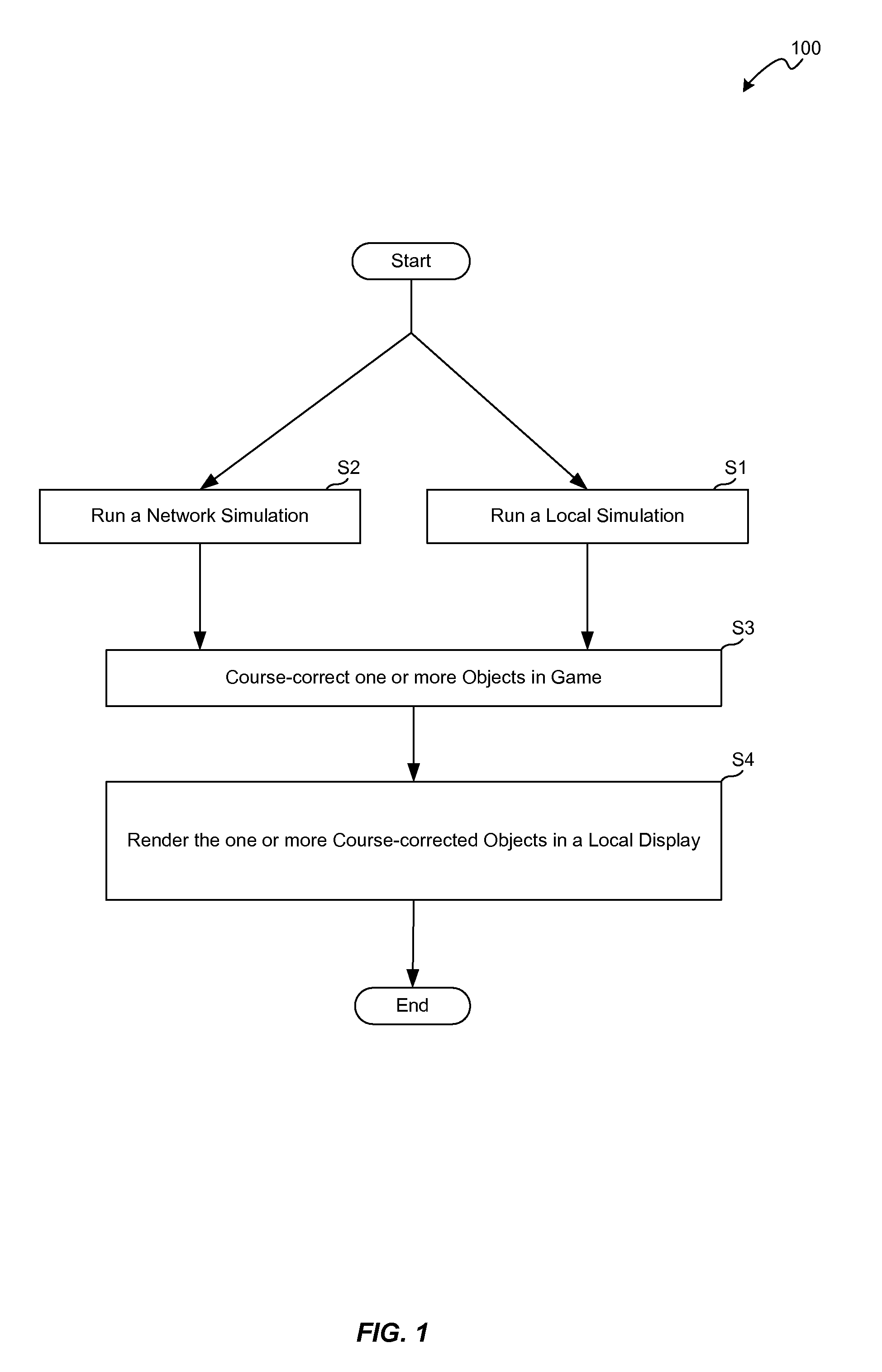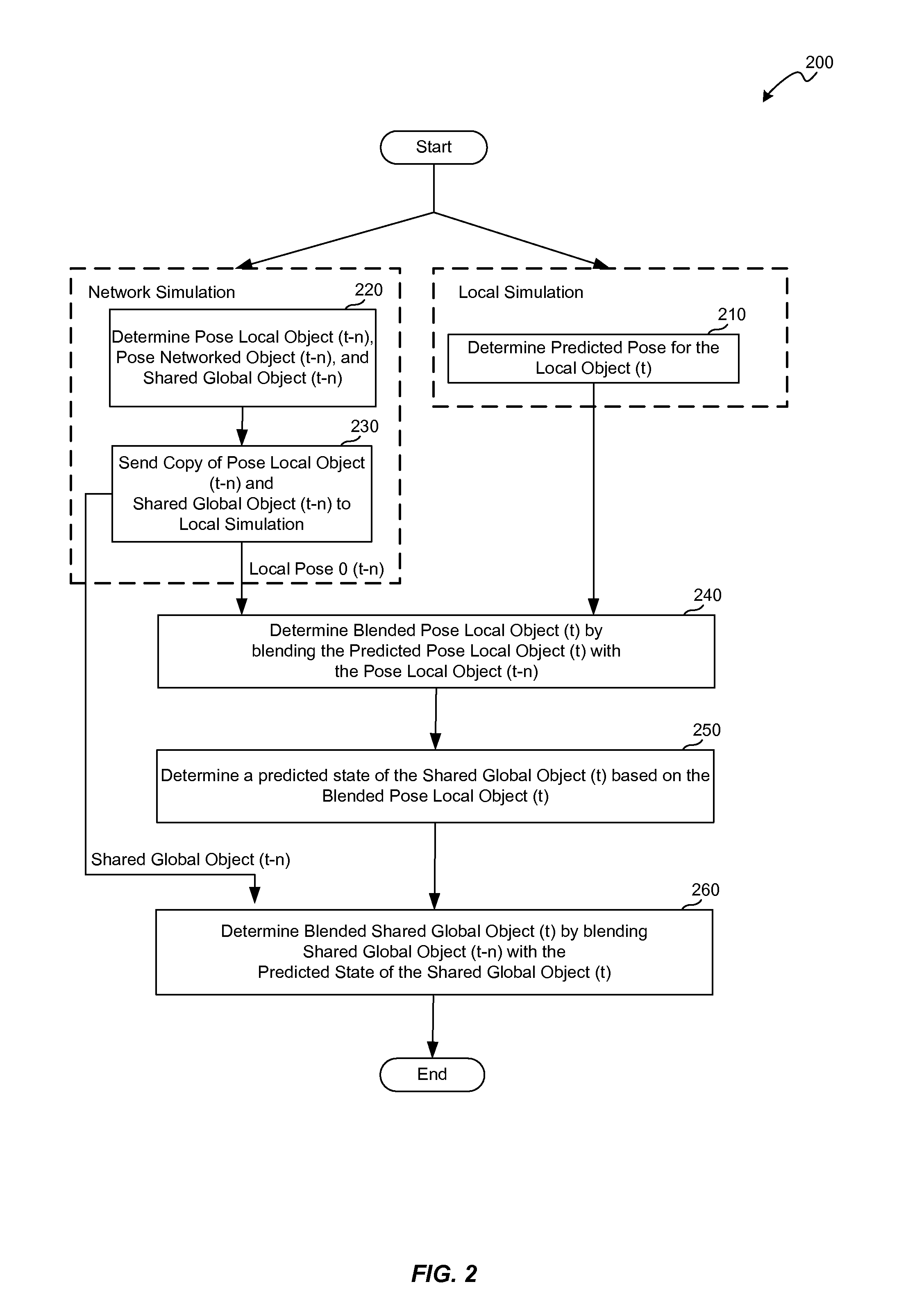Client-side prediction of a local game object to reduce apparent network lag of multiplayer simulations
a client-side prediction and local game technology, applied in the field of interactive applications, can solve problems such as delay in receiving game inputs, delay in game play display, and delay in real-time systems
- Summary
- Abstract
- Description
- Claims
- Application Information
AI Technical Summary
Benefits of technology
Problems solved by technology
Method used
Image
Examples
Embodiment Construction
[0022]A method for client side (local) prediction of one or more local game objects to reduce apparent network lag of multiplayer simulations for interactive games, such as networked video games and other applications, is described herein.
[0023]A simulation is a process wherein a game device, server or system determines new states for a game based on a prior state and player inputs. A state of a game might include where various players' characters are in a game space, a score, an inventory of game objects available to those characters, a camera location, positions / stances of characters or other game objects, etc. For example, if the frame is a soccer game, the game state might include positions of a ball and 22 players, a score, time left on the clock, etc. and in one simulation cycle, the game system considers that state and current user inputs for the current cycle to arrive at a new state for the current cycle. A display image can then be generated for the new state. A simulation...
PUM
 Login to View More
Login to View More Abstract
Description
Claims
Application Information
 Login to View More
Login to View More - R&D
- Intellectual Property
- Life Sciences
- Materials
- Tech Scout
- Unparalleled Data Quality
- Higher Quality Content
- 60% Fewer Hallucinations
Browse by: Latest US Patents, China's latest patents, Technical Efficacy Thesaurus, Application Domain, Technology Topic, Popular Technical Reports.
© 2025 PatSnap. All rights reserved.Legal|Privacy policy|Modern Slavery Act Transparency Statement|Sitemap|About US| Contact US: help@patsnap.com



